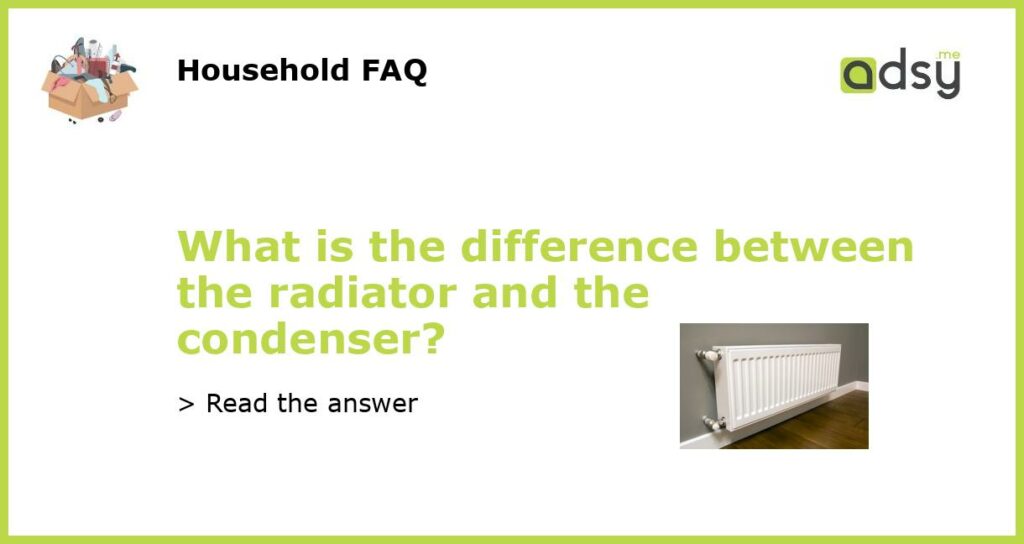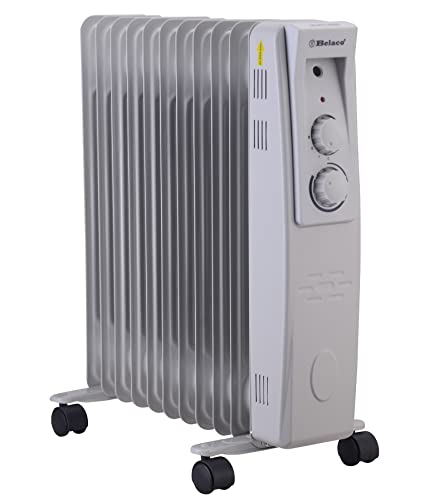The Difference between the Radiator and the Condenser
When it comes to your vehicle’s cooling system, two important components to know are the radiator and the condenser. Both are responsible for keeping your engine operating at a safe temperature, but they serve different purposes. Here’s what you need to know:
Radiator: The Engine’s Cooling System
The radiator is part of your car’s cooling system, responsible for removing heat from the engine. Coolant, a mix of water and antifreeze, circulates from the engine through the radiator where it is cooled by air flowing through the radiator fins. This helps regulate engine temperature and prevents overheating, which can cause serious engine damage.
The radiator is typically located at the front of the vehicle, behind the grille. It has two tanks connected by a series of tubes or fins that help transfer heat from the coolant to the air. Radiators can be either crossflow or downflow design, depending on the vehicle make and model.
Condenser: Cooling the AC System
The condenser, on the other hand, is part of your car’s air conditioning system. It is located in front of the radiator and looks similar, but it serves a different purpose. The AC condenser works by removing heat from the refrigerant gas in the AC system, cooling it so that it can be compressed and cooled further.
When the AC is turned on, high-pressure refrigerant gas is pumped from the compressor into the condenser, where it is cooled by air flowing through the fins. This process removes heat from the car’s cabin, providing cool air for the occupants. The cool liquid refrigerant then returns to the compressor to continue the cycle.
Key Differences between the Radiator and the Condenser
Aside from their different functions within your vehicle, there are some key differences between the radiator and the condenser.
- The radiator is part of the engine’s cooling system, while the condenser is part of the air conditioning system.
- The radiator is typically located at the front of the vehicle, while the condenser is usually in front of the radiator.
- The coolant in the radiator is pumped from the engine, while the refrigerant in the AC system is circulated from the compressor.
- The radiator uses tubes or fins to transfer heat from the coolant to the air, while the condenser uses fins to cool the refrigerant gas in the AC system.
- While both components are critical to proper vehicle operation, a malfunctioning radiator can cause engine damage, while a faulty condenser can lead to poor AC performance.
Maintaining Your Radiator and Condenser
Proper maintenance of both the radiator and the condenser is important to keep your vehicle running smoothly. For the radiator, make sure to regularly check the coolant level and add more if needed. It’s also recommended to have the radiator flushed and the coolant changed periodically, as old coolant can become acidic and corrode the radiator.
For the condenser, make sure to clean any dirt or debris from the fins, as this can restrict airflow and reduce performance. You may also want to have the AC system professionally serviced to check for leaks and ensure proper refrigerant levels.
By understanding the differences between the radiator and the condenser and how they function within your vehicle, you can better maintain and care for these critical components.






